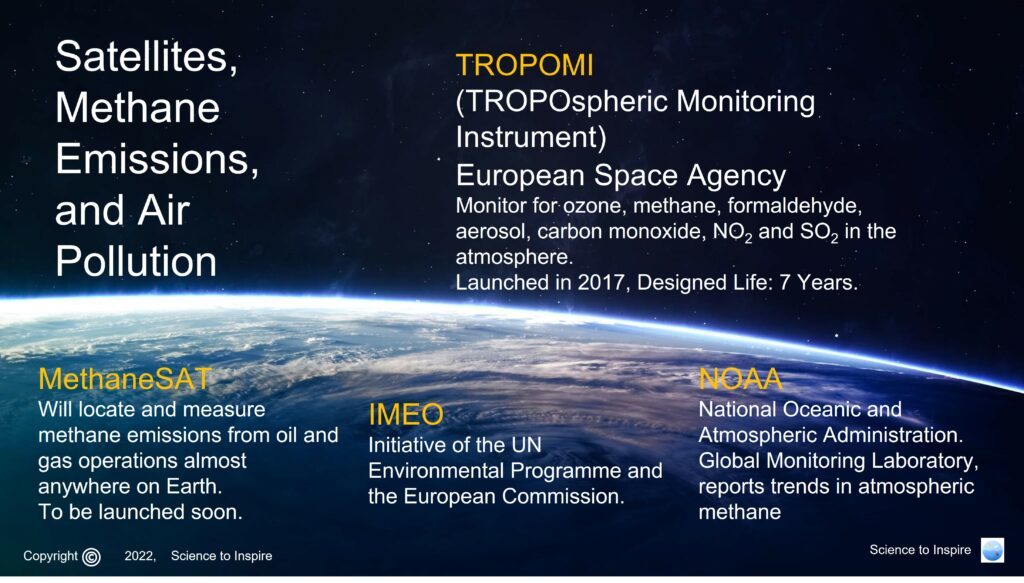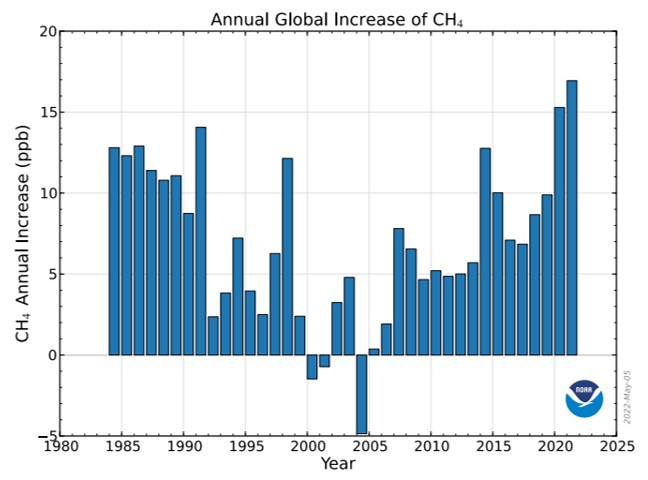Many initiatives, research, and ideas for measuring and understanding today’s methane emissions are being developed by many.
Here are some:
The International Methane Emissions Observatory (IMEO): an initiative by the UN Environment Program with the support of the European Commission that will provide near-real-time data on the locations and quantity of methane emissions. Peer-reviewed studies reconciled with near-real-time observational data produce less knowledge gap about the sources and consequences of methane emissions into the atmosphere. Within the IMEO and the Climate and Clean Air Coalition, The Oil & Gas Methane Partnership 2.0 contributes to knowledge by bringing a measurement-based data framework of methane emissions reporting in the oil and gas sector.

The MethaneSAT is a satellite from MethaneSAT, LLC, a wholly-owned subsidiary of Environmental Defense Fund, USA, that will locate and measure methane emissions from oil and gas operations almost anywhere on Earth. It is now under construction but on schedule for a launch window that opens on 1 October 2022 with Space X aboard a Falcon 9 Rocket.
Exciting data was published by the National Oceanic and Atmospheric Administration (NOAA) where methane concentrations raced past 1,800 parts per billion last year and more than 11,000 parts per billion in 2012, showing an increment of more than 100% for 10 years. Trends in atmospheric methane are open to download: CH4 Methane NOAA.

The PRIMAP-hist is a dataset produced by the Potsdam Institute for Climate Impact Research (PIK), in Germany, which combines published comprehensive sets of greenhouse gas emission data for every country and is named “Paris Reality Check: PRIMAP-hist”. It is a comprehensive set covering the years 1750 to 2019.

